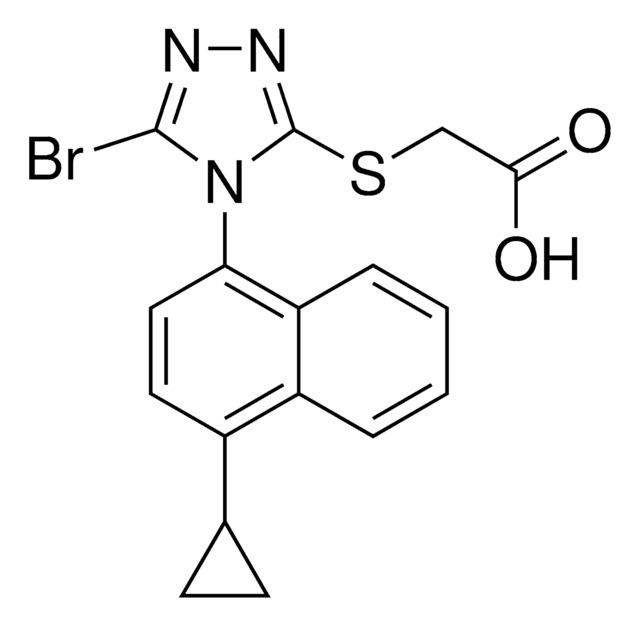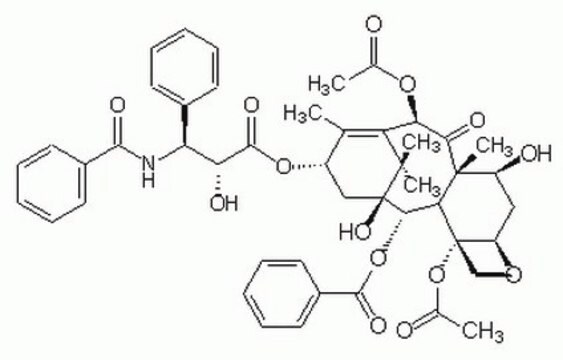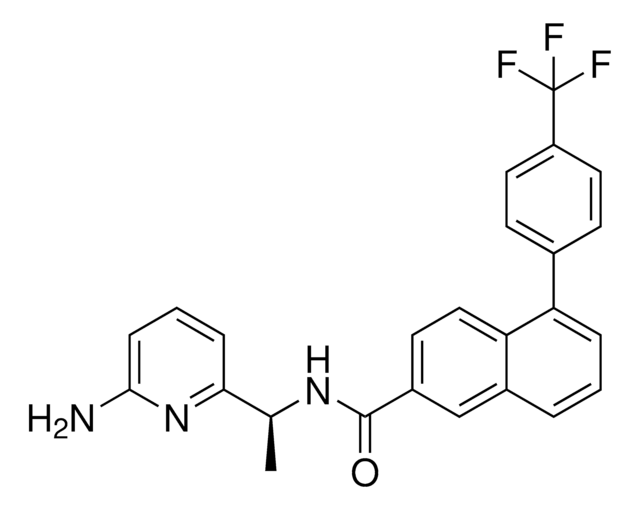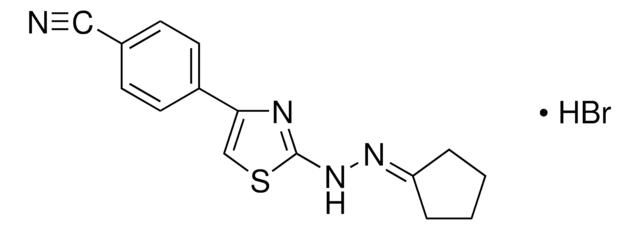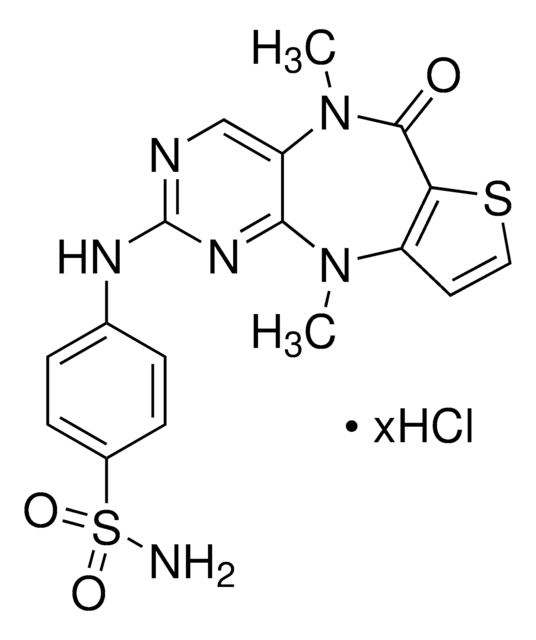SML2647
CA3
≥97% (HPLC)
Synonym(s):
1,1′-[[9-(Hydroxyimino)-9H-fluorene-2,7-diyl]bis(sulfonyl)]bis-piperidine, 2,7-bis(1-Piperidinylsulfonyl)-9H-fluoren-9-one oxime, CIL56
Sign Into View Organizational & Contract Pricing
All Photos(1)
About This Item
Empirical Formula (Hill Notation):
C23H27N3O5S2
CAS Number:
Molecular Weight:
489.61
MDL number:
UNSPSC Code:
12352200
NACRES:
NA.77
Recommended Products
Assay
≥97% (HPLC)
form
powder
color
white to beige
solubility
DMSO: 2 mg/mL, clear
storage temp.
−20°C
Biochem/physiol Actions
CA3 is a potent and selective inhibitor of YAP1 (Hippo co-activator Yes-associated protein 1) that inhibits YAP1 expression and transcriptional activity in esophageal adenocarcinoma (EAC) cell lines. CA3 potently inhibits growth, induces apoptosis in radiation resistant CSC (cancer stem cell) enriched EAC cells. It inhibits tumor growth of in xenograft model with no apparent toxicity.
Storage Class Code
11 - Combustible Solids
WGK
WGK 3
Flash Point(F)
Not applicable
Flash Point(C)
Not applicable
Certificates of Analysis (COA)
Search for Certificates of Analysis (COA) by entering the products Lot/Batch Number. Lot and Batch Numbers can be found on a product’s label following the words ‘Lot’ or ‘Batch’.
Already Own This Product?
Find documentation for the products that you have recently purchased in the Document Library.
Shumei Song et al.
Molecular cancer therapeutics, 17(2), 443-454 (2017-11-24)
Mounting evidence suggests that the Hippo coactivator Yes-associated protein 1 (YAP1) is a major mediator of cancer stem cell (CSC) properties, tumor progression, and therapy resistance as well as often a terminal node of many oncogenic pathways. Thus, targeting YAP1
Siyuan Hao et al.
iScience, 27(6), 109927-109927 (2024-05-24)
YAP/TEAD signaling is essential for organismal development, cell proliferation, and cancer progression. As a transcriptional coactivator, how YAP activates its downstream target genes is incompletely understood. YAP forms biomolecular condensates in response to hyperosmotic stress, concentrating transcription-related factors to activate
Xiao Qin et al.
Cell, 186(25), 5554-5568 (2023-12-09)
Cancer cells are regulated by oncogenic mutations and microenvironmental signals, yet these processes are often studied separately. To functionally map how cell-intrinsic and cell-extrinsic cues co-regulate cell fate, we performed a systematic single-cell analysis of 1,107 colonic organoid cultures regulated
Sina Stern et al.
Neuron, 109(21), 3436-3455 (2021-09-12)
An inhibitory extracellular milieu and neuron-intrinsic processes prevent axons from regenerating in the adult central nervous system (CNS). Here we show how the two aspects are interwoven. Genetic loss-of-function experiments determine that the small GTPase RhoA relays extracellular inhibitory signals
Our team of scientists has experience in all areas of research including Life Science, Material Science, Chemical Synthesis, Chromatography, Analytical and many others.
Contact Technical Service




